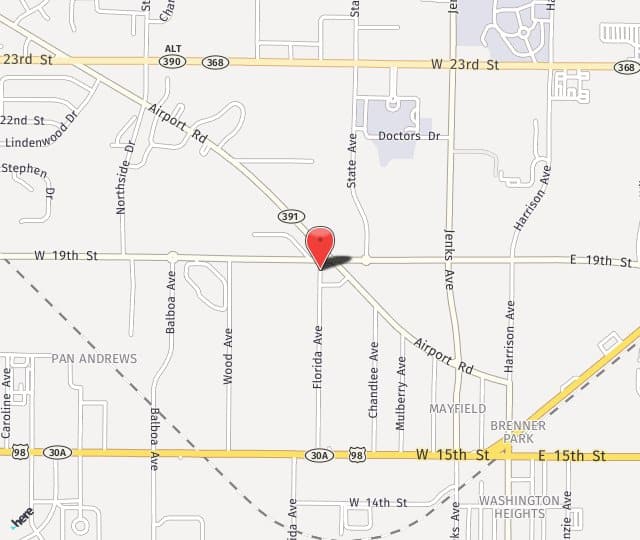An ambulatory phlebectomy, also called a microphlebectomy or stab phlebectomy, is an outpatient procedure performed to remove spider and varicose veins through small, slit-like incisions in the skin. When varicose veins near the surface of the skin are too large to treat with sclerotherapy and too small to treat with radio frequency ablation, microphlebectomy is the preferred treatment. Since veins are extremely collapsible, even the largest affected veins can often be removed through tiny incisions using the ambulatory phlebectomy procedure. This minimally invasive treatment does not require general anesthesia and can easily be performed in the doctor‘s office with minimal downtime. Ambulatory phlebectomy involves less pain and fewer risks than traditional surgical treatment.
Reasons for Ambulatory Phlebectomy
Some patients seek treatment for their varicose veins for cosmetic purposes, while others are concerned about the potential risks of their damaged veins. Untreated veins can lead to pain, inflammation and discoloration. They can also affect the flow of oxygen-depleted blood between the lower legs and the heart. Ambulatory phlebectomy treats symptomatic and asymptomatic veins and can relieve both cosmetic and medical concerns in one simple procedure. After damaged veins have been removed, other healthy veins in the leg will absorb the excess blood and reinstate a normal blood flow. Functioning will not be affected by removing the damaged veins, as there are many surrounding veins to take over.
Ambulatory Phlebectomy Procedure
The ambulatory phlebectomy procedure is performed on an outpatient basis. This procedure takes about 45 to 60 minutes to perform. The doctor will first identify the veins to be treated to ensure precise removal and to help preserve the health of surrounding veins and tissue. Before beginning the surgery, the doctor will inject aerated sclerosant into the dieased vein prior to the local anesthetic which makes it more visible when using ultrasound. This technique significantly increases the effectiveness of removing the diseased veins in the question with less "blind" trauma to the tissues. Patients generally do not experience any discomfort during the procedure. Tiny incisions will be made in the targeted areas, and a surgical hook will be inserted to extract the damaged veins section by section. The incisions are very small and usually requires around 1 stitch per incision site. Veins are very collapsible such that even large veins may be removed through the tiny incisions used in this technique. The patient will be required to wear compression bandages for a week after surgery to help minimize swelling and discomfort.
Risks of Ambulatory Phlebectomy
Patients who are allergic to local anesthesia or those who cannot wear compression stockings should not undergo the ambulatory phlebectomy procedure. Any active infections or rashes should be thoroughly treated before this procedure as well.. Although an ambulatory phlebectomy is considered quite safe, there are certain risks associated with any surgical procedure. In a few cases, there may be residual inflammation and irritation resulting from an incomplete removal of damaged veins. Other risks may include:
- A nerve injury to the skin
- Adverse reaction to anesthetic or sedative
- Severe bleeding or swelling
- Numbness or pain in the feet
- Post-surgical infection
- Thrombophlebitis
Recovery from Ambulatory Phlebectomy
Some bruising, discomfort and swelling are to be expected after an ambulatory phlebectomy. Swelling and pain can be minimized with compression garments and over-the-counter pain medications, and are usually only temporary. Patients will be able to walk and carry on with normal activities immediately after the ambulatory phlebectomy procedure. They can usually return to work the next day, although exercise and heavy lifting should be avoided for about two weeks.
The incisions from this procedure do not require sutures and are able to heal on their own but, we do put in stitches because of the amout of local anesthtic we use. This allows the body to absorbe the tumescent verses it leaking out. The incision sites are barely visible after six to twelve months. Some patients may experience mild skin pigmentation at the site of the varicose vein, but this usually goes away on its own after a short time. Most people see effective results from an ambulatory phlebectomy since damaged veins have been completed removed. Ambulatory phlebectomy offers permanent effective results for most patients, although it is possible for new varicose veins to develop, particularly in patients with a family history of varicose veins. The risk of recurrence can be minimized if the patient maintains a proper weight and an active lifestyle.
Read what our patients are saying!
" Dr Shuler is the smartest, kindest, most sympathetic doctor I’ve ever had the pleasure of knowing. I trust him with my life and thank God he serves the residents of Bay County. Thank you sir for providing stellar care to your patients and thank you for the care you provided to men and women in uniform while serving in the United States Armed Forces. God bless you. "


